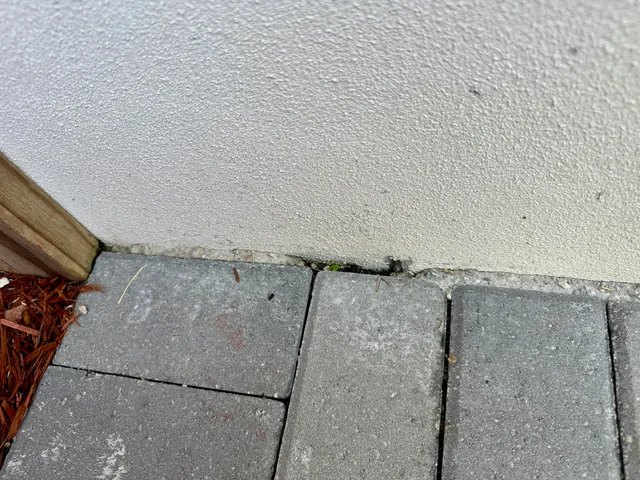Concrete surfaces are durable, but over time, cracks and gaps can form due to weathering, moisture, and wear and tear. Concrete caulking is an essential maintenance step to prevent further damage and extend the lifespan of your concrete structures. Whether you are a homeowner or a business owner, understanding the basics of concrete caulking will help you maintain your property efficiently. Below, we answer some of the most common questions about concrete caulking and provide insights into costs.
What Is Concrete Caulking?
Concrete caulking is the process of sealing cracks, joints, and gaps in concrete surfaces using specialized caulking materials. This prevents water infiltration, reduces the risk of further cracking, and enhances the overall appearance of concrete surfaces.
Why Is Concrete Caulking Necessary?
Concrete caulking serves multiple purposes, including:
- Preventing Water Damage: Sealing cracks prevents water from seeping in, which can lead to erosion and structural damage.
- Reducing Weed Growth: Cracks in concrete provide a perfect environment for weeds to grow. Sealing them helps prevent unwanted vegetation.
- Enhancing Aesthetic Appeal: Well-maintained concrete surfaces look better and can increase property value.
- Improving Safety: Sealing cracks reduces trip hazards, making sidewalks, driveways, and patios safer.
- Extending Concrete Lifespan: Regular maintenance prevents the need for costly repairs or replacement.
What Are the Types of Concrete Caulking?
Concrete caulking materials vary based on their application and durability. The most common types include:
- Polyurethane Caulk: Highly flexible and durable, ideal for outdoor use.
- Silicone Caulk: Water-resistant and best for areas exposed to moisture.
- Acrylic Latex Caulk: Easy to apply and paintable but less flexible.
- Hybrid Sealants: Combine benefits of polyurethane and silicone, offering long-lasting adhesion.
When Should You Caulk Concrete Cracks?
You should caulk concrete cracks as soon as they appear. However, the best time for caulking is during mild weather conditions (spring or fall) when temperatures are moderate. Extreme heat or cold can affect the curing process and adhesion of the caulking material.
How to Apply Concrete Caulking?
Applying concrete caulking is a straightforward process if done correctly. Here are the steps:
- Clean the Area: Remove debris, dirt, and moisture from the crack using a wire brush or air blower.
- Prepare the Crack: Use a backer rod for deep cracks to provide support for the caulk.
- Choose the Right Caulk: Select a sealant suitable for your specific concrete surface and weather conditions.
- Apply the Caulk: Use a caulking gun to apply an even bead along the crack.
- Smooth the Sealant: Use a caulking tool or a gloved finger to smooth out the sealant for a professional finish.
- Allow for Proper Curing: Follow the manufacturer’s instructions for curing time before exposing the area to traffic or moisture.
How Long Does Concrete Caulking Last?
The lifespan of concrete caulking depends on the type of sealant used, weather conditions, and traffic exposure. Generally:
- Polyurethane caulk lasts 5-10 years.
- Silicone caulk lasts 10-20 years.
- Acrylic latex caulk lasts 2-5 years. Regular inspections and touch-ups can help extend the life of the caulking.
What Will Concrete Caulking Cost You?
The cost of concrete caulking varies depending on the size of the area, type of sealant, and labor costs if you hire a professional. Here’s a general breakdown:
DIY Caulking Costs:
- Caulking tubes: $5 to $15 per tube (each tube covers 10-20 feet of cracks).
- Backer rods: $5 to $15 per roll.
- Caulking gun: $10 to $50 (one-time purchase).
- Total DIY cost: $20 to $100 for small projects.
Professional Caulking Costs:
- Labor costs: $3 to $7 per linear foot.
- Material costs: $1 to $3 per linear foot.
- Total cost: $300 to $1,000 for larger projects, depending on complexity and surface conditions.
Hiring professionals ensures a longer-lasting and more effective application, especially for larger or commercial projects.
Can You Paint Over Concrete Caulking?
Yes, you can paint over concrete caulking, but you need to choose a paintable caulk, such as acrylic latex or polyurethane. Allow the caulk to fully cure before applying paint to ensure proper adhesion and durability.
How to Maintain Caulked Concrete Surfaces?
To extend the lifespan of caulked concrete surfaces:
- Inspect regularly for cracks or signs of wear.
- Clean the surface periodically to prevent dirt buildup.
- Reapply caulk when necessary, especially in high-traffic or exposed areas.
Conclusion
Concrete caulking is a cost-effective way to maintain and protect concrete surfaces from damage. Whether you choose to do it yourself or hire a professional, timely caulking can save you from costly repairs in the long run. Understanding the different types of caulk, application methods, and costs involved will help you make informed decisions for maintaining your concrete surfaces effectively.

